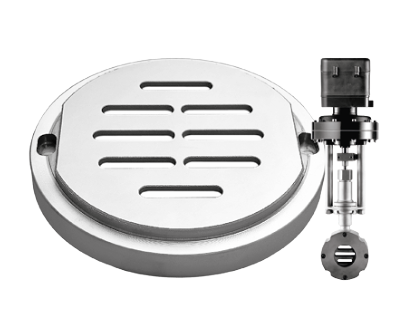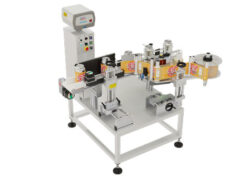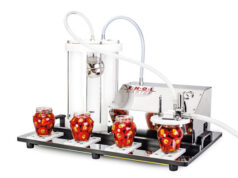 Al Birrificio Eichbaum le valvole a sede del locale caldaia vengono sostituite con valvole a dischi fessurati, uno scorrevole su uno fisso
Al Birrificio Eichbaum le valvole a sede del locale caldaia vengono sostituite con valvole a dischi fessurati, uno scorrevole su uno fisso
Relazione sull’applicazione di Thomas Böttger
Nelle applicazioni in cui si usano valvole tradizionali a sede per intercettare il flusso di vapore, queste risultano estremamente vulnerabili alle rigature della tenuta fluido, e ciò causa inevitabilmente trafilamenti di vapore, tanto costosi quanto potenzialmente pericolosi.
È stato proprio questo uno dei motivi che hanno spinto il Birrificio Eichbaum, uno degli impianti di birrificazione più grandi e produttivi del Baden-Württemb
erg, ad affidarsi, ormai da diversi anni, all’utilizzo delle valvole a
dischi fessurati, uno scorrevole su uno fisso, nell’ambito delle misure di modernizzazione adottate dall’azienda.
Tale scelta ha comportato la progressiva sostituzione delle valvole difettose utilizzate fino ad allora con valvole a disco fessurato scorrevole, dato che queste ultime, grazie ad un principio di tenuta completamente diverso dalle valvole a sede, sono in grado di offrire notevoli vantaggi, non solo negli impianti a vapore.
Usura ancor più ridotta grazie ad una corsa breve
Il vantaggio della valvola a disco fessurato scorrevole, avendo un effetto di tenuta superficiale prodotto dalla sovrapposizione delle parti piene dei due dischi fessurati a contatto fra loro, consiste nel fatto che la pressione esercitata dal fluido contro il disco scorrevole accresce la funzione di tenuta della valvola stessa.
Questo principio di funzionamento determina anche un’azione auto lappante da parte del disco scorrevole, facendo sì che il sistema di tenuta superficiale risulti meno vulnerabile della guarnizione ad anello della valvola tradizionale a sede.
Ciò consente di ottenere delle percentuali di trafilamento inferiori allo 0,0001 % del valore Kvs.
Oltre ad una tenuta permanente altamente efficace, la valvola a disco fessurato scorrevole offre anche un ulteriore vantaggio, che ne influenza l’effettiva durata di funzionamento.
La corsa controllata del disco fessurato scorrevole è al massimo 9 mm.
Questa corsa breve non solo si traduce in una riduzione dei tempi operativi, ma anche della forza esercitata dall’attuatore della valvola.
In una valvola a disco fessurato scorrevole, tali riduzioni determinano carichi di usura molto più bassi della valvola a sede, che si riflettono in una durata di funzionamento sostanzialmente più lunga.
Eliminazione di qualsiasi problema
Grazie alla sua struttura estremamente compatta, una valvola a disco fessurato scorrevole si inserisce agevolmente tra due flange.
Inoltre grazie alla sua leggerezza (una taglia DN150 pesa solo 15 kg attuatore incluso), una valvola a disco fessurato scorrevole può essere montata e rimossa dalla linea di adduzione da una sola persona, e lo stesso vale anche per la sua manutenzione.
La struttura compatta e, di conseguenza, lo spazio significativamente più piccolo richiesto per la valvola a disco fessurato scorrevole, sono stati tra i criteri decisionali chiave per Eichbaum nell’affidarsi a queste valvole per il locale di ammostamento e la cantina di filtrazione.
Pertanto, questa facilità di gestione della valvola a disco fessurato scorrevole ha rappresentato un vantaggio decisivo e una riduzione dei costi, non solo in termini di installazione, ma anche di manutenzione.
Quando una valvola tradizionale richiede manutenzione, bisogna smontare l’intero corpo della valvola per poter accedere agli elementi di sede; normalmente, poi, per questa procedura sono necessari due addetti, il che, invece, non avviene per la valvola a disco fessurato scorrevole, nel cui caso è necessaria una sola persona per effettuare la rimozione e la manutenzione.
Inoltre nel caso della valvola a disco fessurato scorrevole, una volta rimossa la valvola, è sufficiente svitare un’unica vite per accedere al gruppo otturatore, che può così essere rimosso e sostituito.
A differenza della valvola tradizionale, i cui elementi di intercettazione sono progettati per trovarsi in posizione perpendicolare rispetto al flusso, la valvola a disco fessurato scorrevole richiede invece appena un decimo della forza per il posizionamento e la chiusura.
Tale requisito di forza relativamente basso non solo si traduce in un consumo energetico notevolmente ridotto, ma anche in attuatori più piccoli, il che si evidenzia chiaramente nel volume e nel peso.
Nel suo circuito principale di alimentazione del vapore, il Birrificio Eichbaum utilizza attualmente delle valvole a disco fessurato scorrevole del tipo 8021 nelle taglie da DN 80 a DN 200.
Le versioni DN 200 vengono utilizzate, ad esempio, per controllare la quantità di pressione fino a 16 bar di pressione differenziale nella caldaia, fungendo da valvole di intercettazione ad azione rapida come misura di sicurezza in caso di mancanza di corrente, o, tradizionalmente, per controllare la quantità di pressione del vapore.
Valori Kvs variabili per un futuro sicuro
La valvola a disco fessurato scorrevole consente di variare agevolmente e in modo pressoché totale sia la curva caratteristica della valvola stessa che i coefficienti di portata (valore Kvs).
Così facendo, la valvola a disco fessurato scorrevole può essere adattata facilmente a portate molto diverse del flusso.
Ciò viene realizzato dalla forma appropriata delle fessure.
In questo modo è possibile, ad esempio, produrre caratteristiche equipercentuali (esponenziali).
La curva caratteristica di base in cui le fessure dei dischi sono diritte (fori lunghi) è definita “lineare modificata”.
Riducendo le aree aperte delle fessure, è inoltre possibile ridurre il valore Kvs a parità di una taglia del corpo valvola.
Di conseguenza, cambiando semplicemente un disco, il valore Kvs può essere modificato in qualsiasi momento in maniera retroattiva (i valori di Kvs da 0,018 a 910 possono essere raggiunti in tutte le taglie).
Ciò significa che il Birrificio Eichbaum è in grado di adeguarsi in modo flessibile alle variazioni delle quantità di vapore richieste senza incorrere in costi di investimento elevati.
Le valvole a disco fessurato scorrevole sono prodotte • nelle dimensioni da DN 15 a DN 250 • per pressioni fino a PN 160 • per medie temperature da – 200 °C a + 530 °C.
L’ampia gamma di materiali e le diverse regolazioni offrono applicazioni nei settori chimico e tessile, nell’industria farmaceutica, nelle acciaierie e in molti altri casi.
Steam systems efficiency
optimised by control elements Eichbaum Brewery replaces boiler room seat valves with sliding gate valves
An application report by Thomas Böttger
When traditional valves with a metal seat are used to shut off and restrict steam, they are highly susceptible to scoring. Inevitably this leads to costly and even dangerous leakages of steam. This was one of the reasons why the Eichbaum Brewery, one of the largest and most productive breweries in Baden-Württemberg, has placed its faith in sliding gate valves in modernisation measures for many years.
This has involved progressively replacing its defective globe-type valves, used up to that time, with sliding gate valves, since the latter valves provide a seal without a metal seat and therefore offer significant advantages – not just in steam systems.
Even less wear with a short stroke
In the sliding gate valve principle, with surface seal between the plates in the throttling element, the pressure of the medium against the movable valve plate boosts the sealing function of the valve.
This operating principle also provides for a self-lapping action by the movable valve plate. The result of this is that the surface sealing system is significantly less susceptible than a conventional ring seal in a globe-type valve. As a result, leakage rates of less than 0.0001 % of the Kvs value are achieved. In addition to a highly effective permanent seal, the sliding gate valve offers a further benefit inherent in its system which affects its effective working life. The control stroke of the sliding gate valve is a mere 9 mm at most. This short stroke results not only in short operating paths and times, but also significantly reduces the stresses on both the packing as well as on any actuator operating it. In a sliding gate valve, both are subject to much lower loads which is reflected in substantially longer working lives for both.
No problems at all in exchanges
A sliding gate valve is extremely narrow in construction and fits easily between two flanges. A DN 150 sliding gate valve (including actuator) weighs a mere 15 kg, so that it can be fitted and removed by a single person, and, therefore, can also be maintained. The compact construction and therefore the significantly smaller amount of space required for the sliding gate valve were key decision criteria for Eichbaum in placing their reliance on these valves for the mash house and the filter cellar. Thus, this ease of handling the sliding gate valve was a decisive and cost-reducing benefit not only for installation but also for maintenance. When any conventional valve requires maintenance, the complete valve body has to be dismantled to gain access to the seating elements. And, as a rule, this involves two workers. This is not the case with the sliding gate valve. One person only is needed to remove and maintain the throttling element on site in the plant. In the standard version of the sliding gate valve, after removing the valve, a single screw is unscrewed to access the operating unit, which can then be pressed out and exchanged. In contrast to the traditional globe-type valve, since its throttling elements are designed to be perpendicular to the flow, the sliding gate valve needs barely a tenth of the force for positioning and closing. The comparatively low force requirement not only means significantly lower energy consumption, but also provides for smaller valves and smaller valve actuators – which is therefore clearly evident in volume and weight.
The Eichbaum Brewery is now using type 8021 sliding gate valves in sizes DN 80 to DN 200 in its main steam supply circuit. The DN 200 versions are used, for example, to control the amount of pressure up to 16 bar differential pressure at the boiler, serving as fast-acting shut-off valves as a safety measure in power failures, or, in traditional fashion, to control the amount of steam pressure. Variable Kvs values for a secure future It is a simple matter in a sliding gate valve to manipulate both the characteristic curve of the valve as well as the flow factors (Kvs value) in almost any manner. As a result, the sliding gate valve can be adapted easily to widely differing flow volumes. All that is needed is an appropriate form of the slit profile in the sliding plates adapted to almost any conceivable shape. In this way, it is possible, for instance, to produce equal-percentage characteristics (exponential). The basic characteristic curve where the slits in the valve plates are straight (long holes) shows that the valve characteristics are similar to the valve characteristics of rotary plug valves, which can be designated as “modified linear”.
Kvs value reductions within a nominal size are also simple to achieve by reducing the open slit areas. As a consequence, just by exchanging the operating element, the Kvs value can be modified at any time retroactively (Kvs values from 0.018 to 910 can be attained in all nominal sizes). This means that the Eichbaum Brewery can react flexibly and without incurring high investment costs to changes in the quantities of steam required. Sliding gate valves are produced • in the dimensions DN 15 to DN 250 • for pressures to PN 160 • for medium temperatures from – 200 °C to + 530 °C The wide range of materials and different positioners offer applications in the chemical, textile and pharmaceutical industries, steel works and many other sectors. The compact construction and therefore the significantly smaller amount of space required for the sliding gate valve were key decision criteria for Eichbaum in placing their reliance on these valves for the mash house and the filter cellar.












